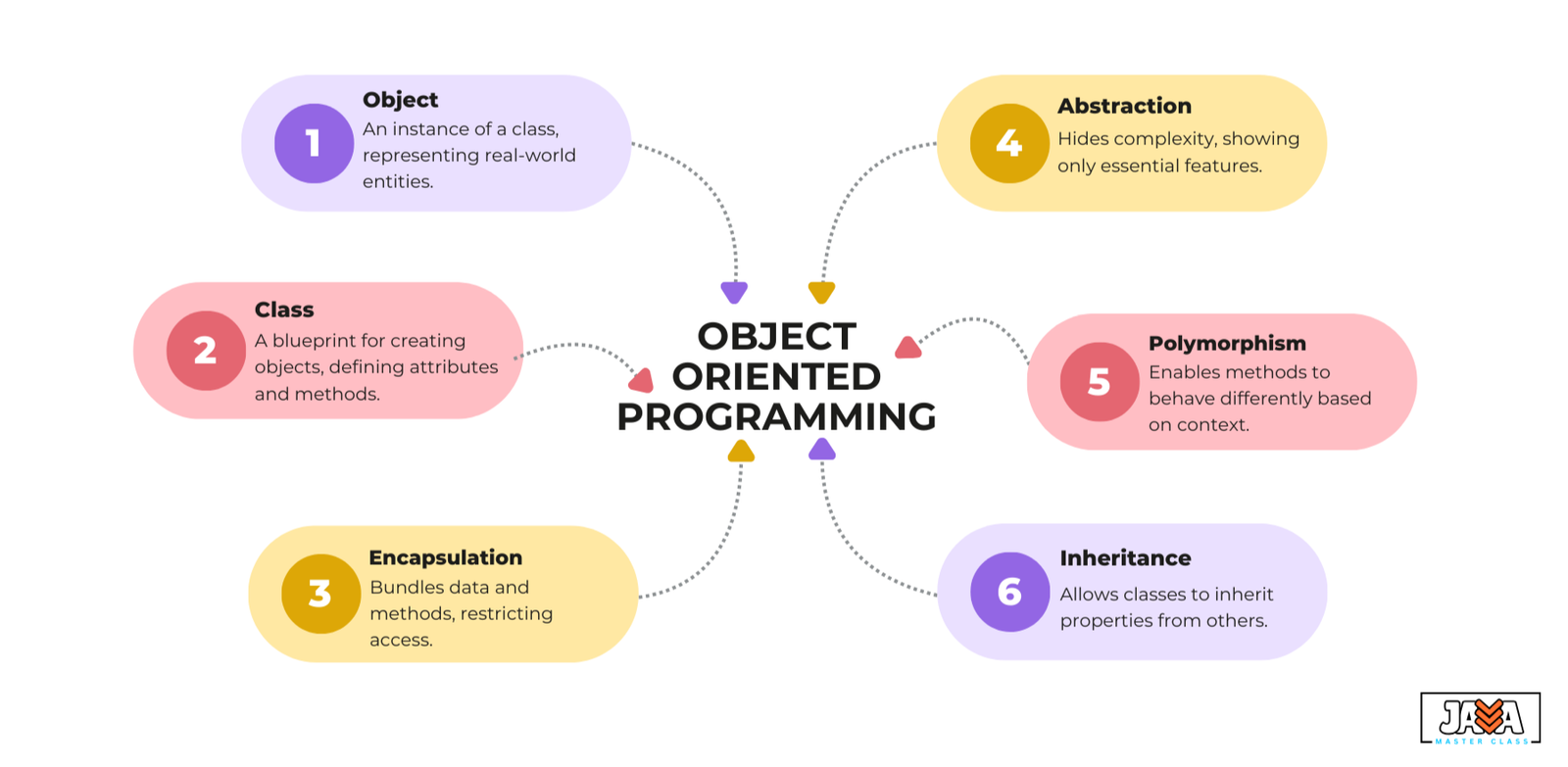Object-Oriented Programming (OOP) is a programming paradigm based on the concept of “objects,” which can contain data in the form of fields (also known as attributes or properties) and code in the form of methods (functions associated with objects). OOP enables modular, reusable, and scalable code, making it one of the most widely used programming models.
In OOP, real-world entities such as students, cars, or bank accounts can be represented as objects. These objects are created using classes, which act as blueprints. OOP helps in organizing code by breaking complex problems into smaller, manageable units.

Importance of OOP
Java is fundamentally an object-oriented programming language, meaning everything in Java revolves around objects and classes. OOP principles in Java offer several benefits:
- Code Reusability – Java encourages reusability through concepts like inheritance and polymorphism. Developers can extend existing classes instead of writing new ones from scratch.
- Data Security – Encapsulation helps in restricting direct access to data by keeping it private and accessible only through specified methods.
- Scalability – OOP allows easy modifications and expansion of applications without affecting existing code.
- Better Code Organization – Since Java applications are structured around objects, it improves readability, maintenance, and debugging.
- Real-World Representation – OOP allows developers to model real-world entities and their interactions effectively.
Key Features of OOP
- Encapsulation: Bundles data and methods that operate on the data into a single unit (class).
- Example: Using private variables with public getter and setter methods.
- Inheritance: One class can inherit properties and behavior from another, promoting code reusability.
- Example: Single Inheritance, Multilevel Inheritance and Hierarchical Inheritance
- Polymorphism: Allows a single method to have different behaviors.
- Example: Method overloading and overriding.
- Abstraction: Hides implementation details and shows only the necessary functionality using abstract classes and interfaces.
- Example: Abstract classes and Interfaces
Procedural vs. Object-Oriented Programming
| Feature | Procedural Programming | Object-Oriented Programming |
|---|---|---|
| Approach | Follows a step-by-step flow (functions) | Organizes code into objects (classes) |
| Code Reusability | Limited reuse of functions | High reuse through inheritance |
| Security | Data is accessible globally | Data is protected using encapsulation |
| Example Language | C, Pascal | Java, Python, C++ |
This is just the beginning! In the coming posts, we will dive deeper into each OOP concept, learn how to implement them in Java, and explore real-world examples. Stay tuned!
